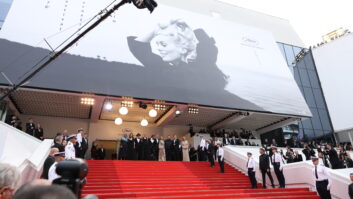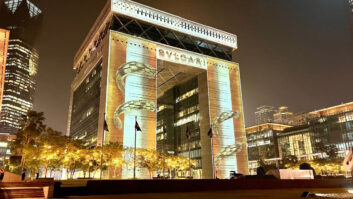Anyone who has been involved in the projector market over the past 20 years – which, to all intents and purposes, is how long the market has existed – must marvel at what’s been achieved. Back then, we claimed that 300 lumens was “more than enough for lights-on presentations” – and we dutifully trotted around the shoot-out at InfoComm to laugh at what some projector manufacturers were doing. There were some really bad projectors – but now, there really aren’t.
And what became of some of the pioneers of DLP technology in projection? nView, Davis, Proxima, Electrohome, Ampro, Liesegang – where are you now?
I was very much involved in DLP technology back in the day. Texas Instruments bet big on projection TVs – the consumer market was always the ultimate goal, rather than the commercial market. What TI saw was a future where DLP projection technology would enable slim, lightweight, large-screen TVs that would always – always – deliver superior image quality to anything a flat panel display could provide. How wrong were we?
Revolutionising movie-going
And yet… DLP went on to revolutionise the movie-going experience. Just six years ago, there were fewer than 4,000 digital cinema projectors installed. Industry estimates indicate that, in 2015, the installed base will be very close to 135,000. That’s pretty much every screen in the world converted – and the large majority of those projectors feature DLP technology. Who would have thought, way back when, that a digital projector could ever deliver images that equalled – in many ways, surpassed – those possible with film?
However: over the past decade or so, the landscape has changed dramatically. Large, flat-panel displays are delivering levels of image quality unthinkable at one time. And, in the mainstream, they’re at price points that were equally unthinkable. There are undoubtedly now many applications and market segments that would previously have needed projection – but that have now turned to flat-panel displays.
It would be easy to believe that projection technology must be on the decline. ISE 2015 will be absolute proof that it isn’t. The fact is that projector manufacturers have responded with innovation after innovation to create new market opportunities.
Flexible, adaptable
A prime example has been the advent of the short throw and ultra-short throw (UST) projection segment. Now highly popular, notably in education, UST projectors overcome two issues that previously saw projectors unfavourably compared with flat-panel displays: the casting of shadows on the screen, and the blinding glare coming from the lens. Now, educationalists have a highly flexible tool – projectors are inherently easily adaptable to spaces of different sizes – that enables the interactivity and engagement that are central to current thinking in teaching.
It’s not just the projectors themselves, though. Screen technology has also come on in leaps and bounds, enabling images to be brighter and higher contrast.
The fact remains: for images over a certain size, projection will continue to be the answer for at least the foreseeable future.
Flat-panel displays of 80in and above are fantastically impressive – but it’s hard to see them approaching the price of a projector/screen combination any time soon. There will be a part of the market that projection will continue to dominate: that market may be slightly smaller than it once was, but it’s still a substantial opportunity.
And, of course, it’s unlikely that flat-panel displays will ever threaten the dominance of high-brightness projection in conference rooms, concerts and visitor attractions. You won’t have to walk far at ISE 2015 to see the truth of that assertion.
It’s undeniably the case that there is room in the market for both technologies. Projection may have lost some share over the past several years but it seems reasonable to believe that that erosion has slowed and may well have flattened – and without some major and unexpected developments in the cost to produce flat-panel displays, its future seems secure.







